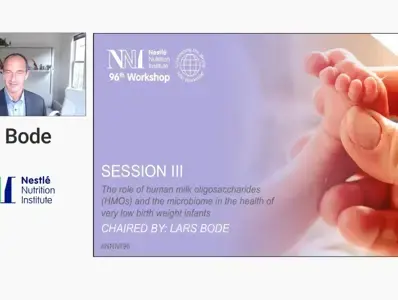NNIW96: HMOs: What They Are And What They Do
In this video, Lars Bode talks about the effects and protective mechanism of human milk oligosaccharides (HMOs). HMOs are an important part of a mother’s milk and the third most abundant solid component, with 5 - 15g per litre compared to 0.05g in bovine milk. There are between 150 and 200 different structures for HMOs and each mother’s is slightly different, like a thumbprint. One key area of research asks what it is in human milk which makes it so powerful to save preterm infants with necrotising enterocolitis (NEC). Preterm infants who receive human milk are up to 10 times less likely to develop it. Pre-clinical research showed survival rates rise significantly with the use of oligosaccharides, and the specific one which stood out as being particularly effective was identified as disialyllacto-N-tetraose or DSLNT. In studies on humans, the more DSLNT in their milk, the less likely infants are to develop NEC.
If you liked this post you may also like

